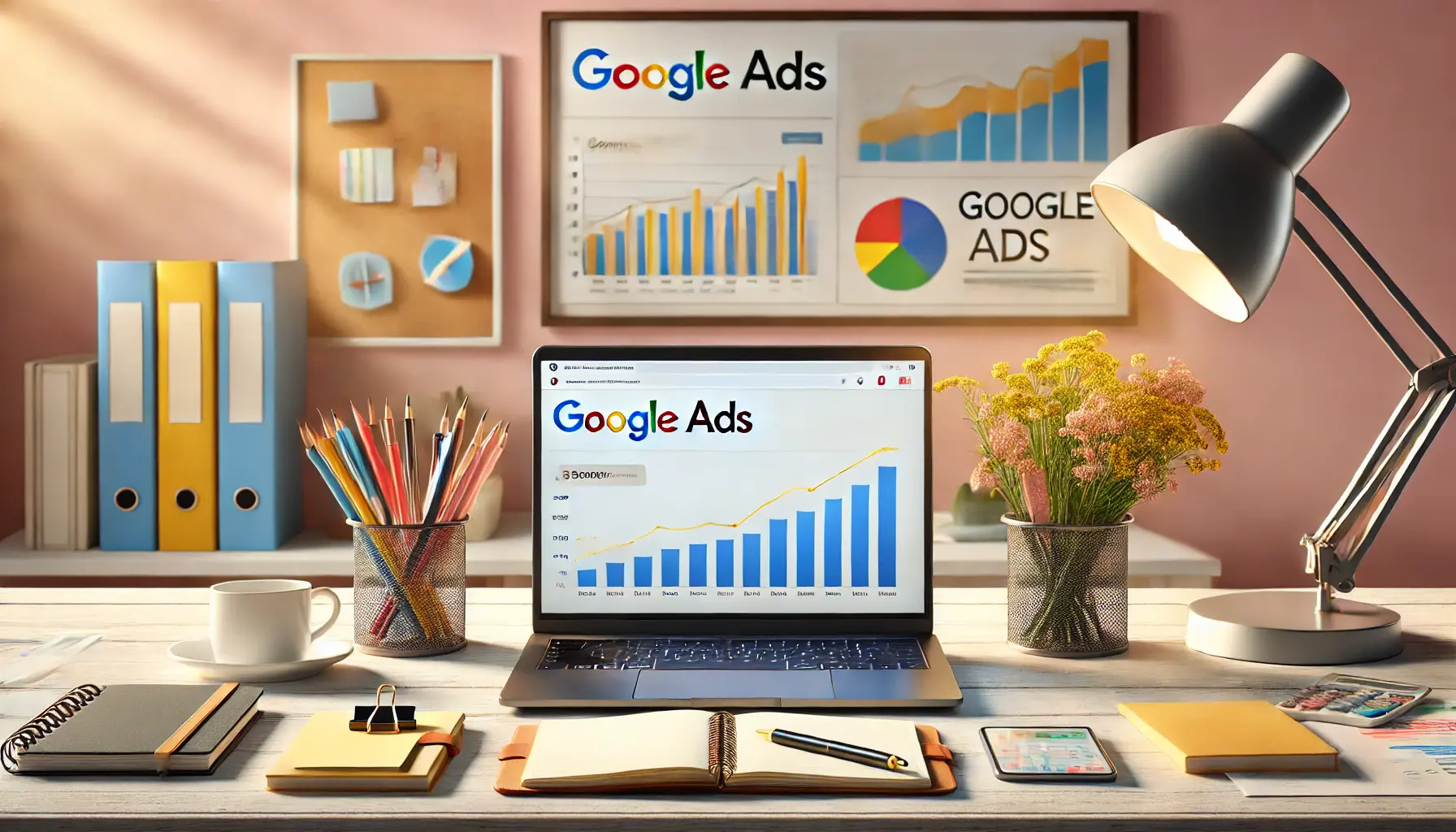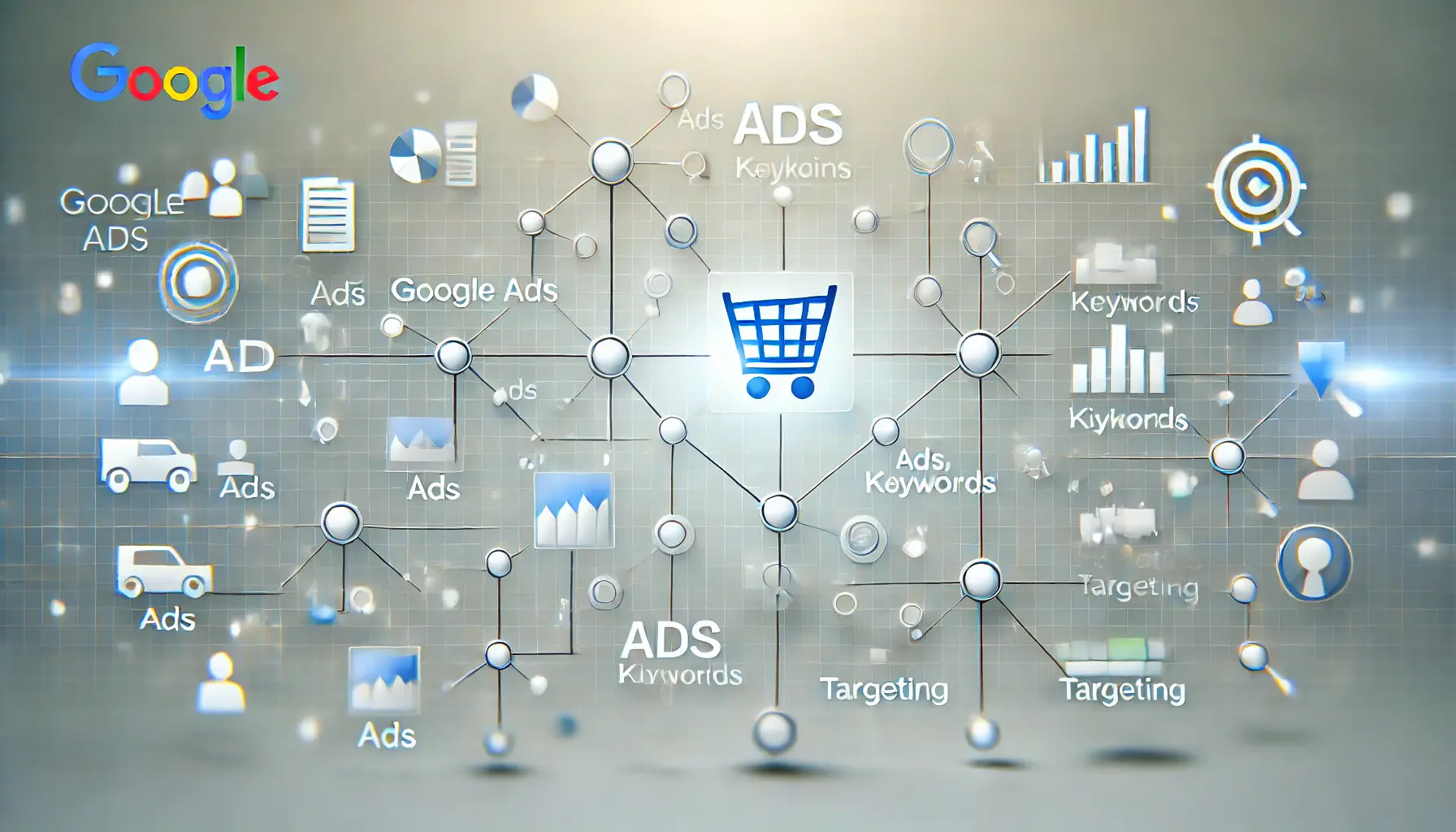These days, running just Google Ads is not going to help you achieve your best goals.
The art of targeting your audience is the real success.
Campaign targeting refinement is one of the most important steps in optimizing ad spend to ensure that the right message is reaching the correct people at just the right time.
Whether one is just starting out with Google Ads or has been running campaigns for a while, refining targeting can make all the difference between a successful campaign and a wasted advertising budget.
So, how do you hit the bullseye?
Let’s dive deeper into how campaign targeting refinement can elevate your Google Ads strategy.
Refining the targeting of a campaign is underlined by a deep understanding of exactly who your ideal audience is and how to reach them.
It’s not just selecting broad attributes like age or location; one has to go deeper to find the data and behaviors that move consumers to act.
Think of it, if you will, like sculpting: you chisel off the broad strokes until you get to a very fine, specific audience that’s actually ready to convert.
Understanding Campaign Targeting
Great campaign targeting goes beyond simply changing some of the default settings in Google Ads.
The more you know about your audience, the better you can tailor your ads to fit their needs, interests, and search behaviors.
It’s all about making sure your budget is wisely spent to display ads to only those people who are most likely to take action with your brand or product.
By targeting properly, you won’t be wasting impressions and clicks on users with no interest in your offerings.

Illustration of campaign targeting in Google Ads, showcasing audience demographics and precision targeting techniques.
What is Campaign Targeting?
Campaign targeting is defined as a process of narrowing down an audience into particular groups that would best fit the business or product in question.
In Google Ads, you can define this audience using several parameters, such as location, demographics, interests, behaviors, and more.
The goal is to ensure your ads are shown to users who are more likely to convert, improving your ad relevance and reducing costs over time.

Refining campaign targeting ensures better conversion and optimization in Google Ads, leading to improved campaign performance.
Why Refining Campaign Targeting is Crucial
Refining your campaign targeting is crucial because, without it, you risk reaching a broad audience that may not be interested in what you’re offering.
This not only leads to a lower conversion rate but also wastes your advertising budget.
Refining enables you to target high-intent users who are more likely to engage with your ads.
These users will grow your ROIReturn on Investment, a measure of the profitability of an investment. and improve the overall performance of your campaign.
- Improved ROI: More conversions from the same ad spend lead to better returns on investment.
- Precise Targeting: Reaching users who are genuinely interested in your product results in higher engagement.
- Reduced Waste: Avoid paying for clicks or impressions from users who have no interest in your product.

Illustration of improved campaign performance and ROI in Google Ads through refined targeting and optimization.
Impact on Campaign Performance and ROI
Precise targeting has a direct influence on the performance metrics of your campaign.
Greater relevance means a higher click-through rate, more conversions, and an improved Quality Score.
This leads to lower cost-per-clicks (CPCs) and better ad positions on search result pages.
Ultimately, this makes your ad spend more efficient and increases your overall ROI.
Refining your campaign targeting in Google Ads depends on various key factors, each of which can directly affect the relevance or effectiveness of an ad.
These are some of the key elements you should focus on to make accurate adjustments in your targeting, aiming to reach the most relevant audience with high levels of engagement and conversions.
Let’s explore some of the key factors to focus on for optimizing your campaign targeting.

Illustration of demographic targeting in Google Ads, focusing on age, gender, and location to refine audience selection.
Demographics: Age, Gender, and Location
Demographic targeting on Google Ads allows you to narrow down your audience based on vital characteristics such as age, gender, and location.
These are key factors because they directly impact how a person engages with your product or service.
For instance, a message targeting millennials will differ in words and images from one targeting retirees.
Additionally, location targeting allows businesses operating in a specific region or country to ensure their ads are shown to the right geographical audience.
By refining demographics, you ensure that your ads are reaching the most relevant audience based on who they are and where they live.

Illustration of how Google Ads uses interests and behavioral insights for precise audience targeting and campaign optimization.
Interests and Behavioral Insights
Google Ads offers powerful tools for targeting users based on their interests and behaviors.
By using affinity audiences or custom intent audiences, you can reach people who have shown interest in related products, services, or topics.
Behavioral targeting goes one step further, analyzing the user’s online behavior, purchase history, and search habits, so that ads are shown to those most likely to convert.
Understanding the interests and behaviors of your target audience allows you to create more personalized and relevant ads that generate higher engagement.

Illustration of custom audiences and similar segments in Google Ads, showing how audience targeting is refined using demographic and interest-based filters.
Custom Audiences and Similar Segments
This level of targeting allows you to run highly tailored campaigns that speak directly to those who have already shown interest in your business.
Additionally, similar segments allow you to target users whose characteristics resemble those of your current customers, expanding your reach to larger groups with similar needs or behaviors.
This is an excellent way to leverage existing audience data for further growth.
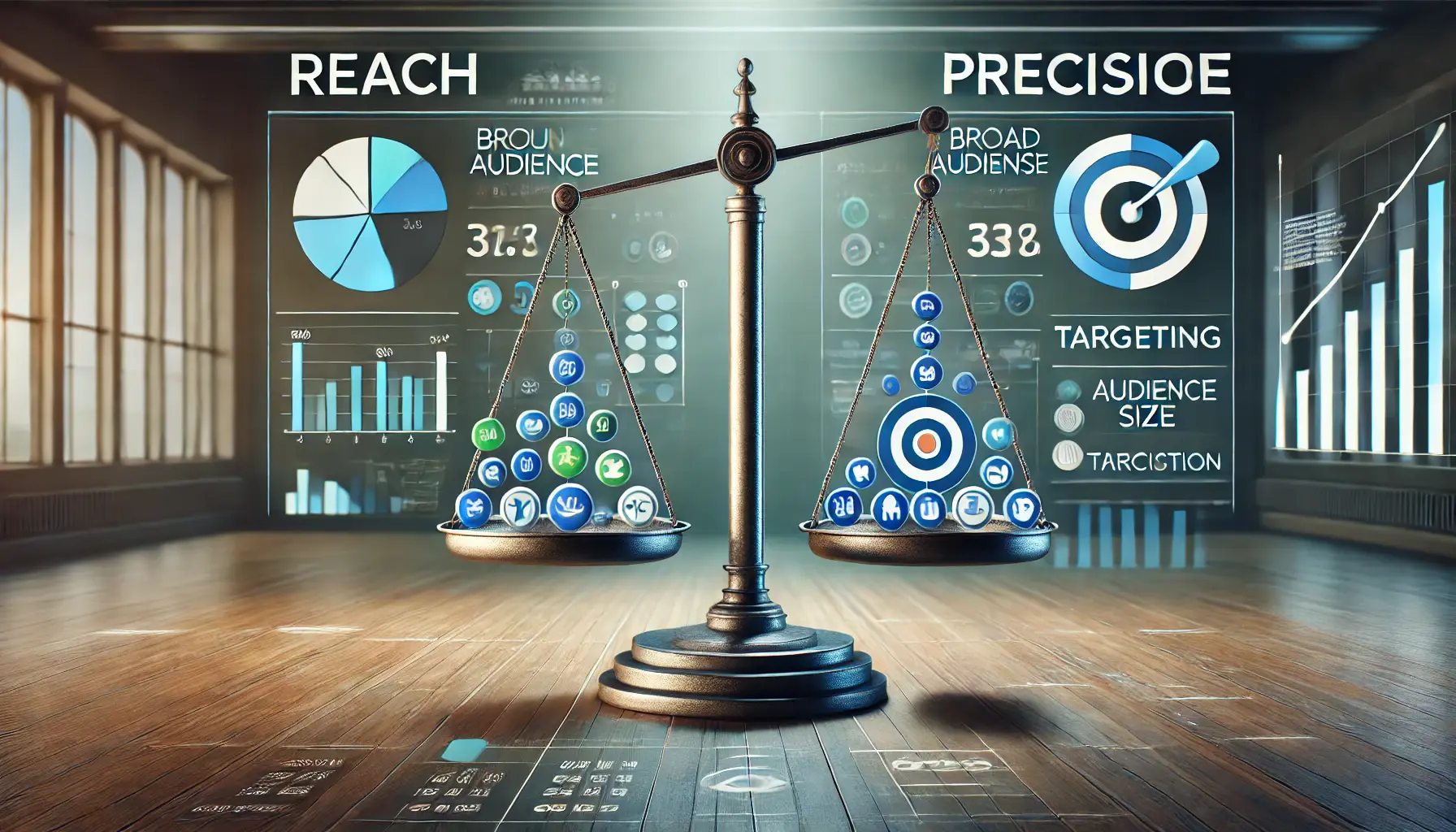
Representation of balancing reach and precision in Google Ads, highlighting the importance of finding the right audience while maximizing reach.
Balancing Reach and Precision
While refining targeting is essential, there is a delicate balance between precision and reach.
Over-targeting can restrict the scope of your campaign, reducing its potential to attract new customers, while under-targeting can lead to wasted ad spend.
A balance needs to be achieved by identifying the most important audience characteristics and sometimes using broader parameters when appropriate.
A/B testing different audience settings and adjusting them based on performance data will help you find the optimal balance.
By paying close attention to all of these factors, you’ll refine your Google Ads campaigns for success: better engagement, higher conversion rates, and a stronger return on your advertising investment.
Understanding your audience allows you to create more personalized and relevant ads, ensuring a higher return on investment (ROI).
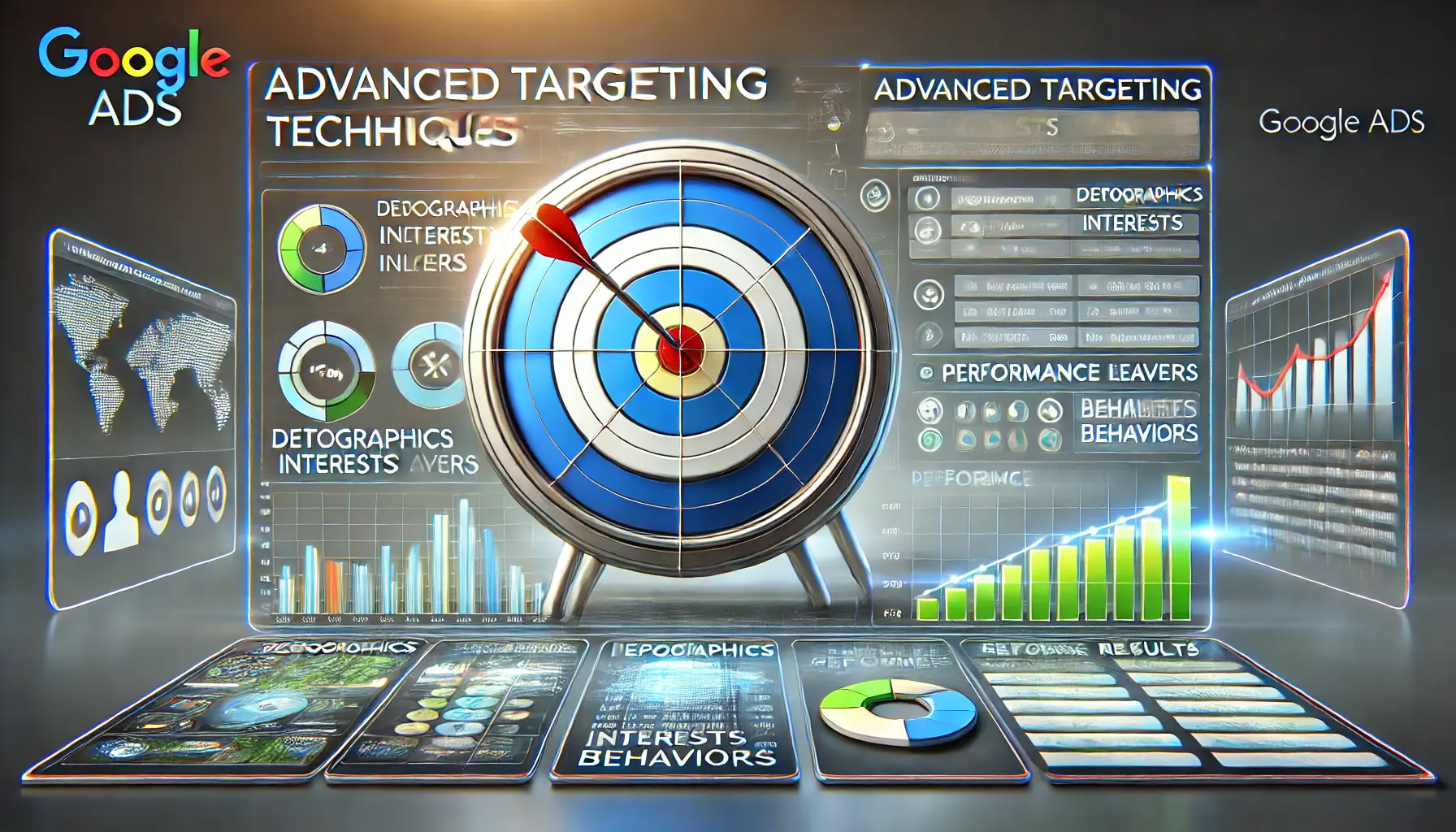
Illustration of advanced targeting techniques in Google Ads, focusing on demographic, interest, and behavioral filters to improve campaign performance.
Advanced Targeting Techniques for Better Results
With increased competition in the digital advertising space, using basic campaign targeting is no longer effective in achieving the best return from your Google Ads campaigns.
Employing advanced targeting techniques can significantly enhance the performance of your ads, ensuring precision in audience targeting.
These methods can increase user engagement, drive more conversions, and create more value from your ad spend.
Let’s explore some advanced targeting techniques that can help you achieve better results for your campaigns.

Representation of keyword targeting and match types in Google Ads, focusing on broad match, phrase match, and exact match strategies.
Keyword Targeting and Match Types
Keyword targeting is one of the most fundamental methods within Google Ads.
However, it’s not just about finding the right keywords; it’s also about how you match them to search queries.
Google Ads offers several match types: broad match, phrase match, and exact match.
Each provides a different level of control over when your ads are triggered by searches.
- Broad Match: This match type allows your ad to show for a wide variety of searches related to your keywords, including synonyms and related phrases. It maximizes reach but may drive some irrelevant clicks.
- Phrase Match: Your ad appears when the search query contains your exact keyword phrase, plus additional words before or after. This offers a good balance between reach and relevance.
- Exact Match: Exact match provides the most control, showing your ad only when the query exactly matches your keyword. This ensures high relevance but may limit your ad’s reach.
Utilizing these match types together allows you to fine-tune your targeting for different stages of your campaign, from awareness to conversion.
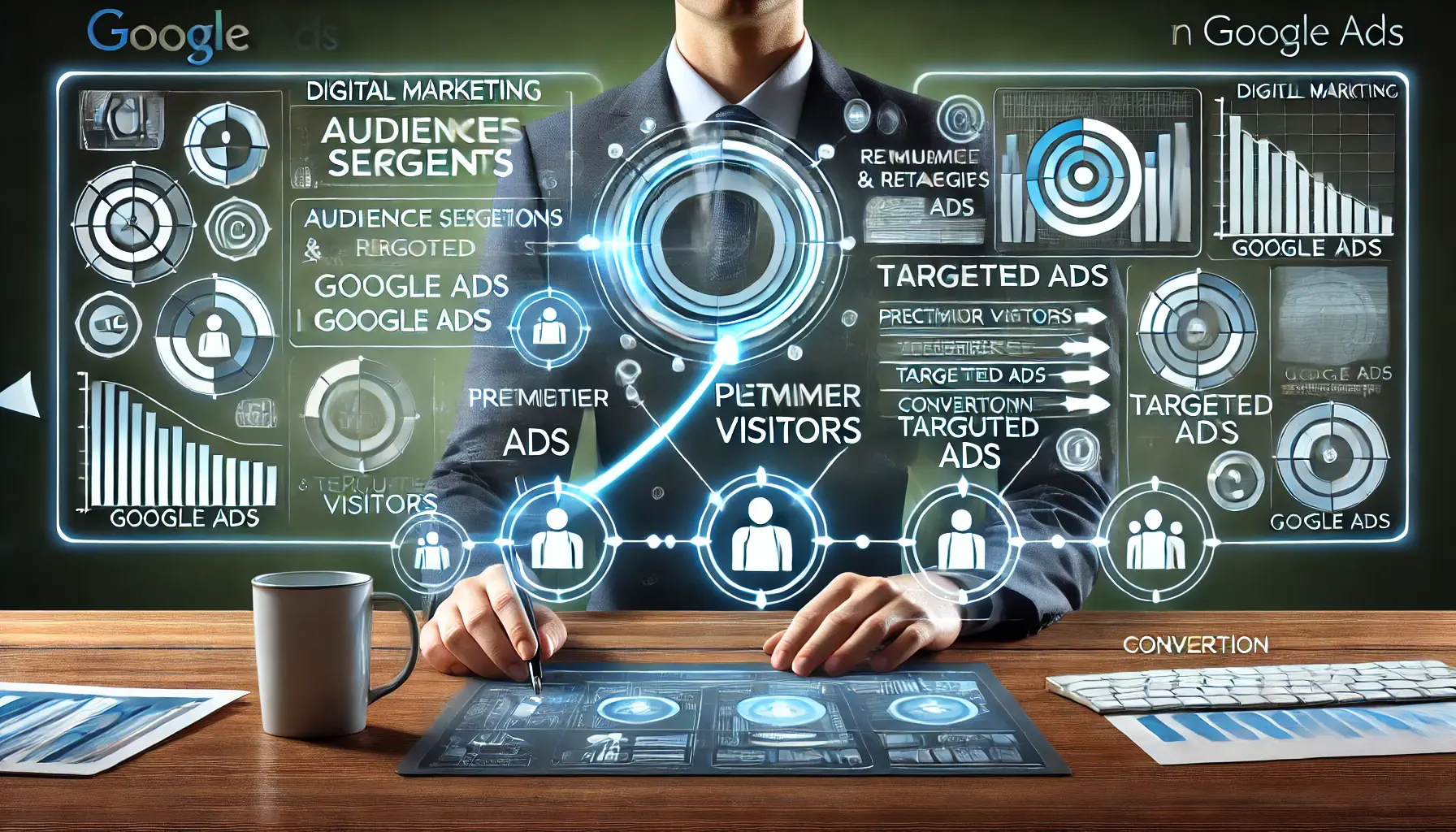
Illustration of remarketing and retargeting strategies in Google Ads, focusing on re-engaging previous visitors and improving conversions.
Remarketing and Retargeting Strategies
Remarketing is one of the most effective strategies for reaching users who interacted with your website or app without converting.
With Google Ads, you can create remarketing lists based on users’ behavior, such as the pages they visited, actions they took, or time spent on your site.
This allows you to deliver highly targeted ads to users who are already familiar with your brand and are more likely to convert.
- Standard Remarketing: Retarget users who visited your site as they browse other websites or use Google services.
- Dynamic Remarketing: Show personalized ads to past visitors based on the products or services they viewed on your site to improve relevance and boost conversions.
- Remarketing Lists for Search Ads (RLSA): Adjust bids and targeting for search ads based on users who previously visited your site, improving the chances of conversion from repeat visitors.
Remarketing is highly effective because it targets users who have already expressed interest in your brand, resulting in lower CPACost Per Acquisition, the cost of acquiring one customer through advertising. and higher conversion rates.

Representation of incorporating audience signals in Google Ads, focusing on predictive targeting based on life events, interests, and behaviors.
Incorporating Audience Signals
With Google’s advanced machine learning algorithms, you can predict user behavior with high accuracy.
By incorporating audience signals into your campaigns, you can target users at moments of high intent.
Audience signals such as life events, in-market audiences, and detailed demographic insights allow you to adjust your bidding strategy in real-time, based on user behavior and intent.

Illustration of leveraging machine learning in Google Ads targeting, highlighting predictive algorithms and data-driven optimization.
Leveraging Machine Learning in Targeting
Machine learning in Google Ads automates processes and makes your campaigns more efficient.
Smart bidding automatically adjusts bids in real-time using machine learning, optimizing for conversions or value maximization based on your campaign goals.
Leveraging Google’s machine learning capabilities enables you to access data-driven insights, predicting which users are most likely to convert and adjusting your campaign accordingly.
These advanced targeting techniques can give your Google Ads campaigns a competitive edge by not only reaching the right audience but also driving measurable results that improve your bottom line.
Advanced targeting techniques, such as remarketing and keyword match types, offer precise control over who sees your ads, leading to better campaign outcomes.
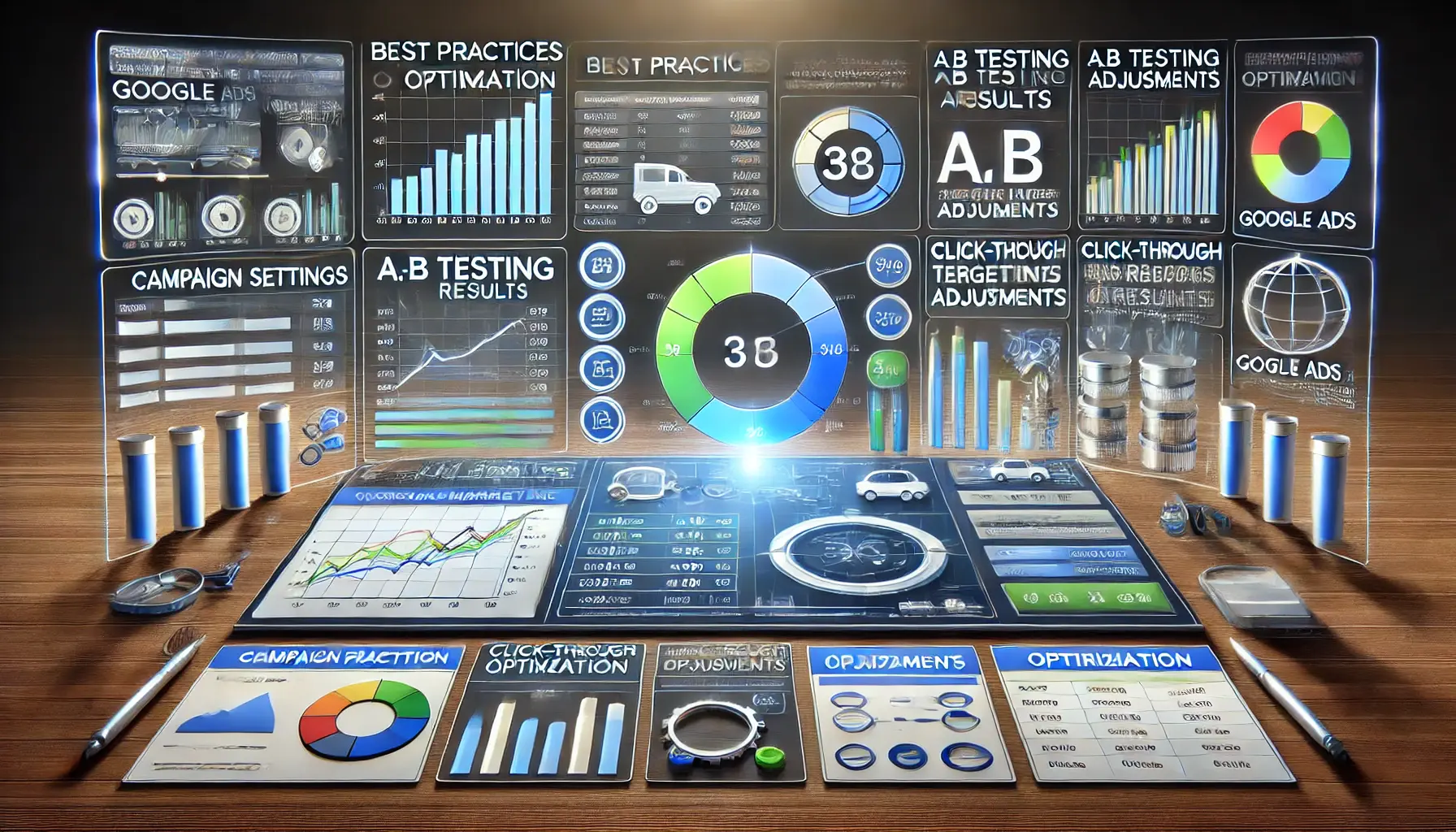
Illustration of best practices for optimizing Google Ads campaigns, focusing on performance optimization and continuous improvement.
Best Practices for Optimizing Google Ads Campaigns
Optimization of Google Ads involves several important steps to ensure you get the most from your advertising budget.
Whether you’re looking to drive conversions or increase brand awareness, following best practices can help you refine your campaign targeting and improve overall performance.
Continuously testing and analyzing the data will allow you to make informed decisions and optimize your campaigns for better results.
Let’s review some of the best practices to optimize Google Ads campaigns for your success.
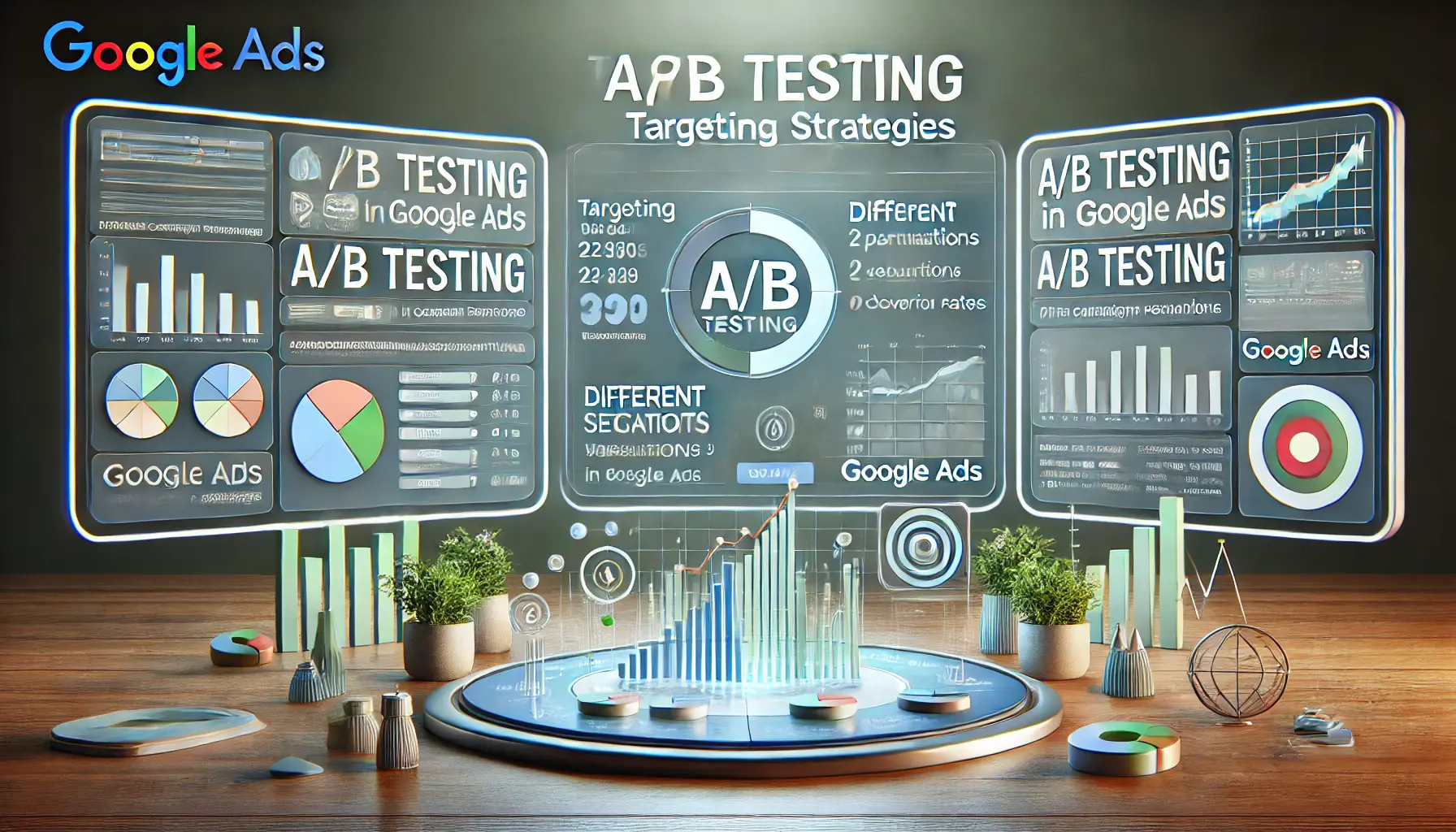
Representation of A/B testing in Google Ads targeting strategies, focusing on comparing different audience segments and ad variations.
Targeting Strategies A/B Testing
A/B testing is one of the most powerful tools in online advertising.
It involves experimenting with different targeting options to see which works best with your audience.
By creating two variations of the same ad, each with different targeting, ad copy, or creative elements, you can observe which version performs better.
A/B testing is essential for fine-tuning your Google Ads campaigns over time.
The key areas to test include:
- Ad Copy: Test headlines, descriptions, and calls-to-action to see which resonates best with your audience.
- Keywords: Try using different keywords or match types to find the most effective combinations for driving conversions.
- Demographics: Test different age groups, genders, and locations to determine which demographics bring the best results.
- Ad Formats: Compare the performance of various ad formats, such as responsive search ads, display ads, or video ads, to identify the best performers.
Illustration of tracking and analyzing targeting data in Google Ads, focusing on performance metrics and audience insights for campaign optimization.
Tracking and Analyzing Targeting Data
Tracking and analyzing your targeting data is crucial for campaign optimization.
Google Ads provides detailed metrics and insights into the performance of your ads in real time.
By regularly reviewing this data, you can identify which audiences yield better returns and where adjustments are needed.
Key metrics to track include:
- Click-Through Rate (CTR): This metric shows how often users click on your ad after viewing it. A higher CTR indicates that your ad is relevant to your targeted audience.
- Conversion Rate: The percentage of users who complete a desired action, such as making a purchase or signing up, after clicking your ad.
- Cost Per Conversion (CPC): CPC tells you how much you’re paying for each conversion, allowing you to optimize your bids and targeting.
- Quality Score: Google assigns a Quality Score based on the relevance and performance of your ads. A higher Quality Score can lead to lower CPCs and better ad placements.

Representation of adjusting bids based on performance in Google Ads, focusing on optimizing bids for better cost-per-click and conversion rates.
Adjusting Bids Based on Performance
Bidding strategies are critical for campaign optimization.
By adjusting your bids based on ad performance, you can allocate your budget more effectively.
For instance, if certain demographics or locations are converting at a higher rate, you may want to increase your bids for those segments.
Conversely, reducing bids for underperforming areas can help you avoid overspending.
Consider these bidding strategies:
- Target CPA: Automatically set bids to achieve as many conversions as possible at your target cost per acquisition.
- Maximize Conversions: Automatically adjust bids to maximize the number of conversions within your budget.
- Enhanced CPC: Automatically adjusts manual bids to help you achieve more conversions.
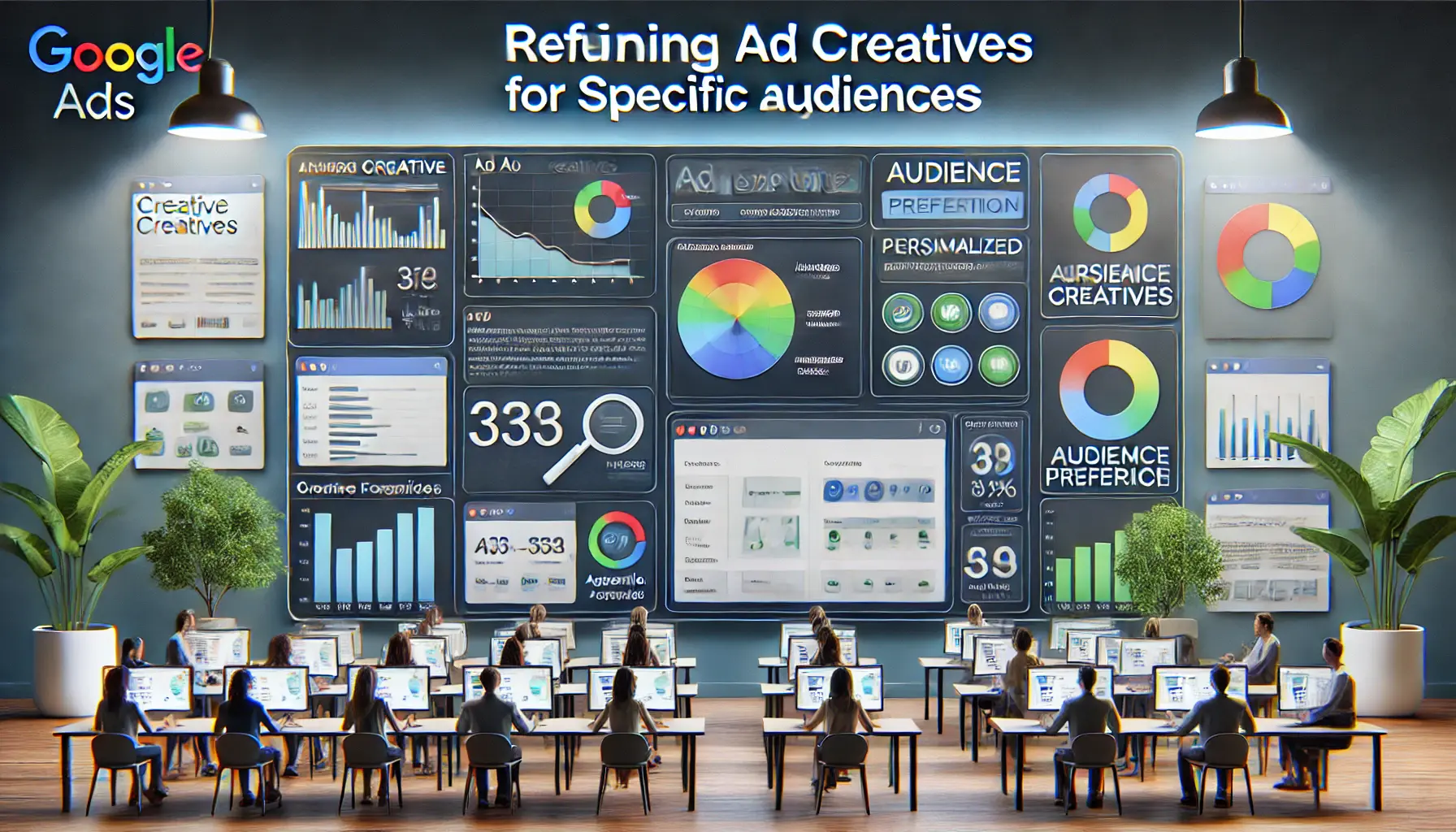
Illustration of refining ad creatives for specific audiences in Google Ads, focusing on personalized designs and audience preferences for better engagement.
Refining Ad Creatives for Specific Audiences
Your ad creatives are the first thing users see, and they play a crucial role in driving engagement and conversions.
Refining your ad creatives to better resonate with your target audience can significantly improve performance.
Tailoring the visuals, messaging, and overall design of your ads to specific segments ensures you deliver relevant and compelling content to users.
Some tips for refining ad creatives include:
- Personalization: Use dynamic ad features to personalize ad content for each user, such as incorporating their location or previously viewed products.
- Visual Appeal: Ensure your ad visuals are eye-catching and relevant to the audience you’re targeting.
- Clear Call-to-Action: Make sure your call-to-action is clear and encourages users to take the next step.
By continuously refining your targeting strategies and ad creatives, you can ensure that your Google Ads campaigns are optimized for success—resulting in increased conversions, better engagement, and improved return on investment.
Optimization requires continuous testing, tracking, and adjustment to ensure your Google Ads campaigns remain competitive and effective.

Illustration of common campaign targeting mistakes in Google Ads, focusing on avoiding misaligned filters and optimizing performance.
Campaign Targeting Mistakes Everyone Makes, and How to Beat Them
Many well-intentioned advertisers make common mistakes when setting up their campaign targeting in Google Ads.
These mistakes can lead to wasted ad spend, low engagement rates, and ultimately poor campaign performance.
Identifying and avoiding these errors can significantly improve the effectiveness of your campaign targeting strategy.
Let’s explore some of the most common mistakes in campaign targeting and how you can avoid them to maximize your Google Ads success.
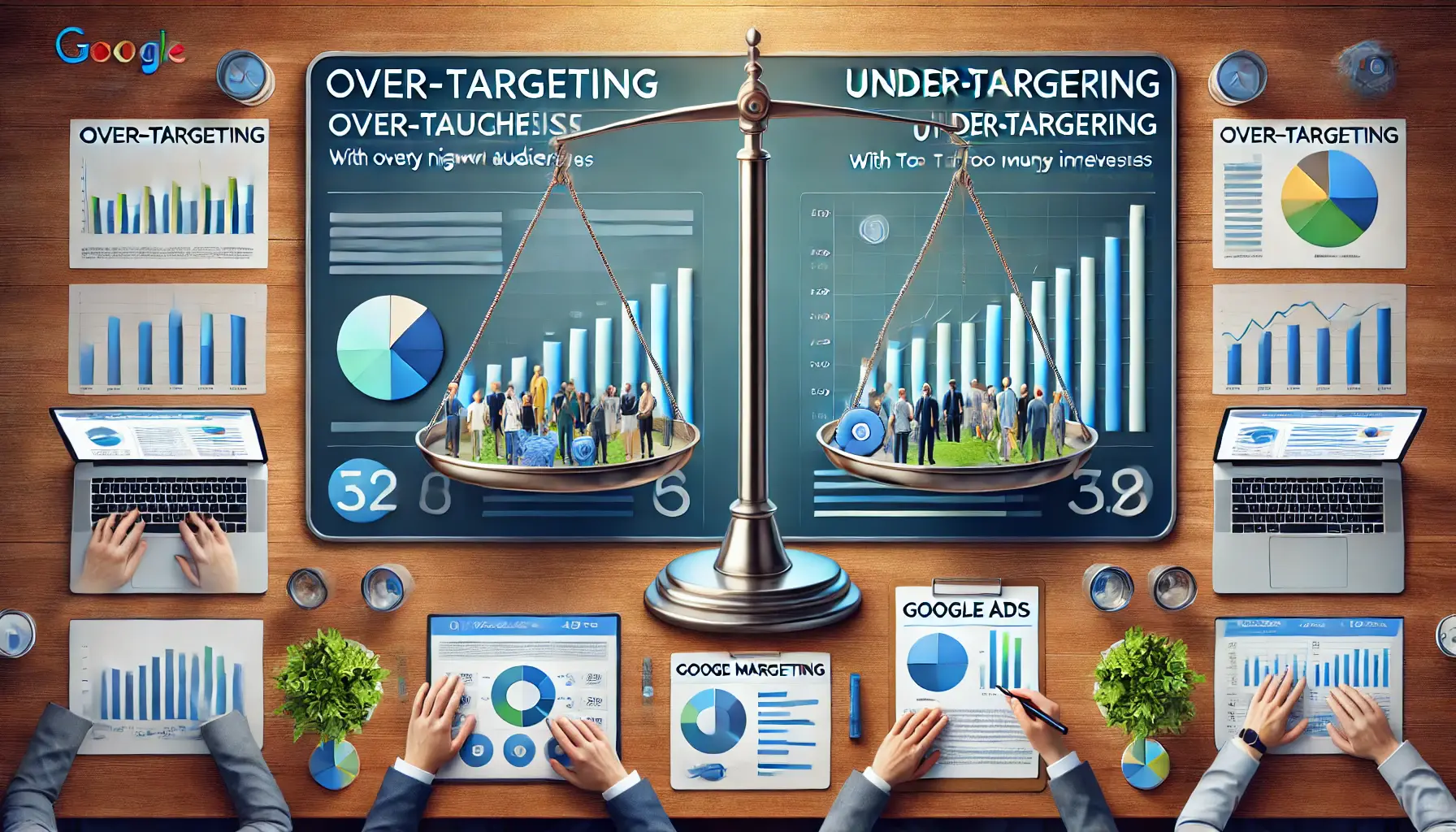
Representation of over-targeting vs. under-targeting in Google Ads, showing the balance between reaching too few or too many irrelevant users.
Over-Targeting vs. Under-Targeting
One of the most significant mistakes advertisers make is either over-targeting or under-targeting their audience.
Over-targeting involves narrowing your audience too much, limiting the reach of your campaign and stifling growth.
On the other hand, under-targeting casts too wide of a net, which can lead to irrelevant clicks and wasted ad spend.
How to avoid: Balance reach and precision by using a combination of broad and specific targeting options.
Start with a broader audience and narrow it down based on performance data.
You can also perform A/B testing on different audience parameters to find the right targeting sweet spot.

Representation of ignoring negative audience exclusions in Google Ads, showing the importance of removing irrelevant audience segments to optimize targeting.
Ignoring Negative Audience Exclusions
Another common mistake is failing to exclude irrelevant audiences.
Without negative audience exclusions, your ads may be shown to users who are unlikely to convert, leading to wasted impressions and clicks.
For example, if you are promoting a high-end product, it’s essential to exclude users specifically looking for budget options.
How to avoid: Regularly review and update your audience exclusions to ensure your ads are shown only to relevant users.
Use insights from previous campaigns to identify audiences that do not convert, and exclude them from future campaigns.
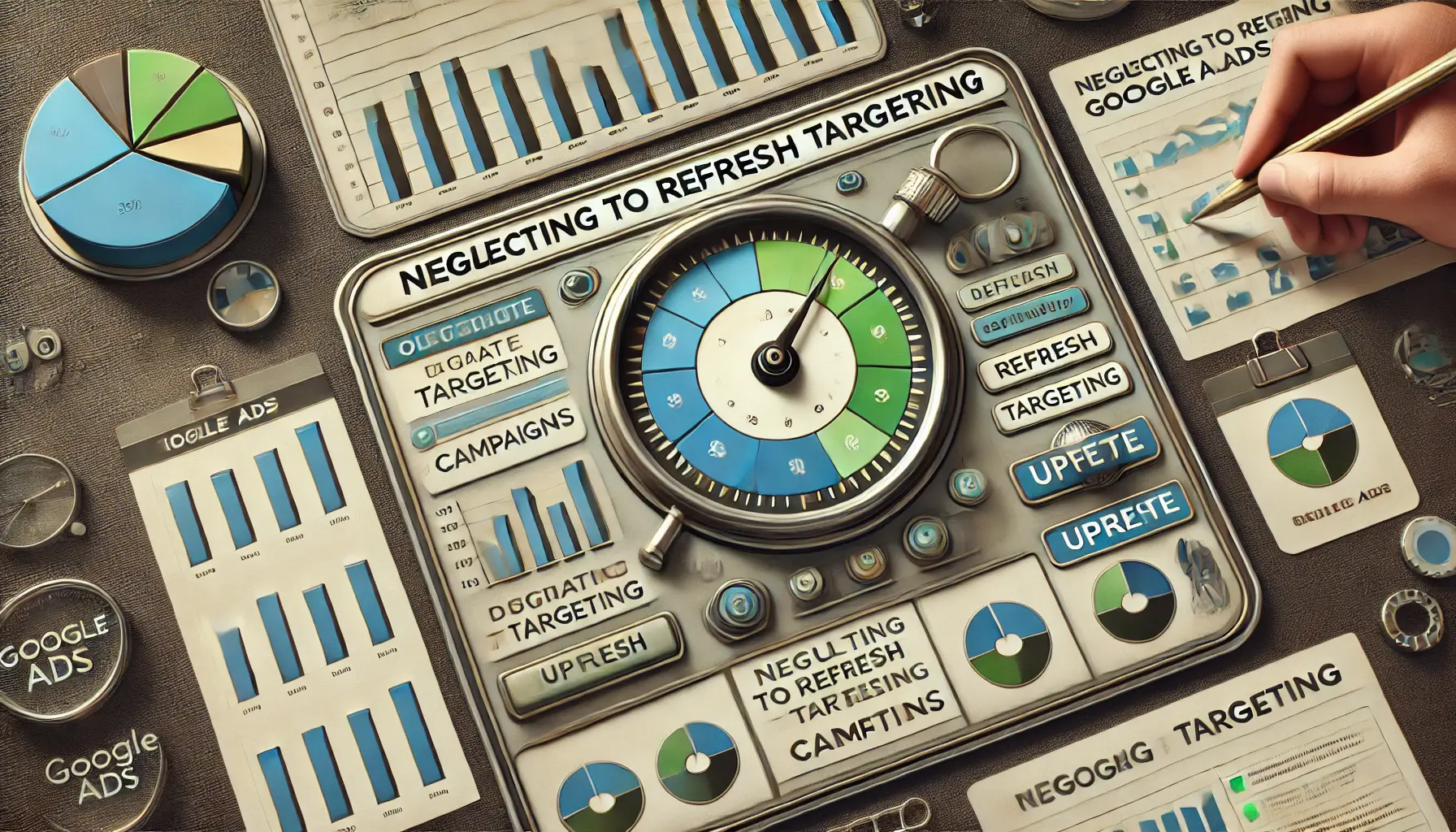
Representation of neglecting to refresh targeting in Google Ads, showing the importance of regularly updating targeting settings for optimal performance.
Neglecting to Refresh Targeting Periodically
Many advertisers set their campaign targeting at the start and then fail to refresh it as the campaign progresses.
This can result in outdated targeting that no longer aligns with current audience behaviors or goals.
Continuous optimization is necessary for Google Ads campaigns to remain effective.
How to avoid: Periodically check and update your targeting settings.
Use Google Ads data to refine your demographic settings, add new audience segments, or exclude low-performing groups.
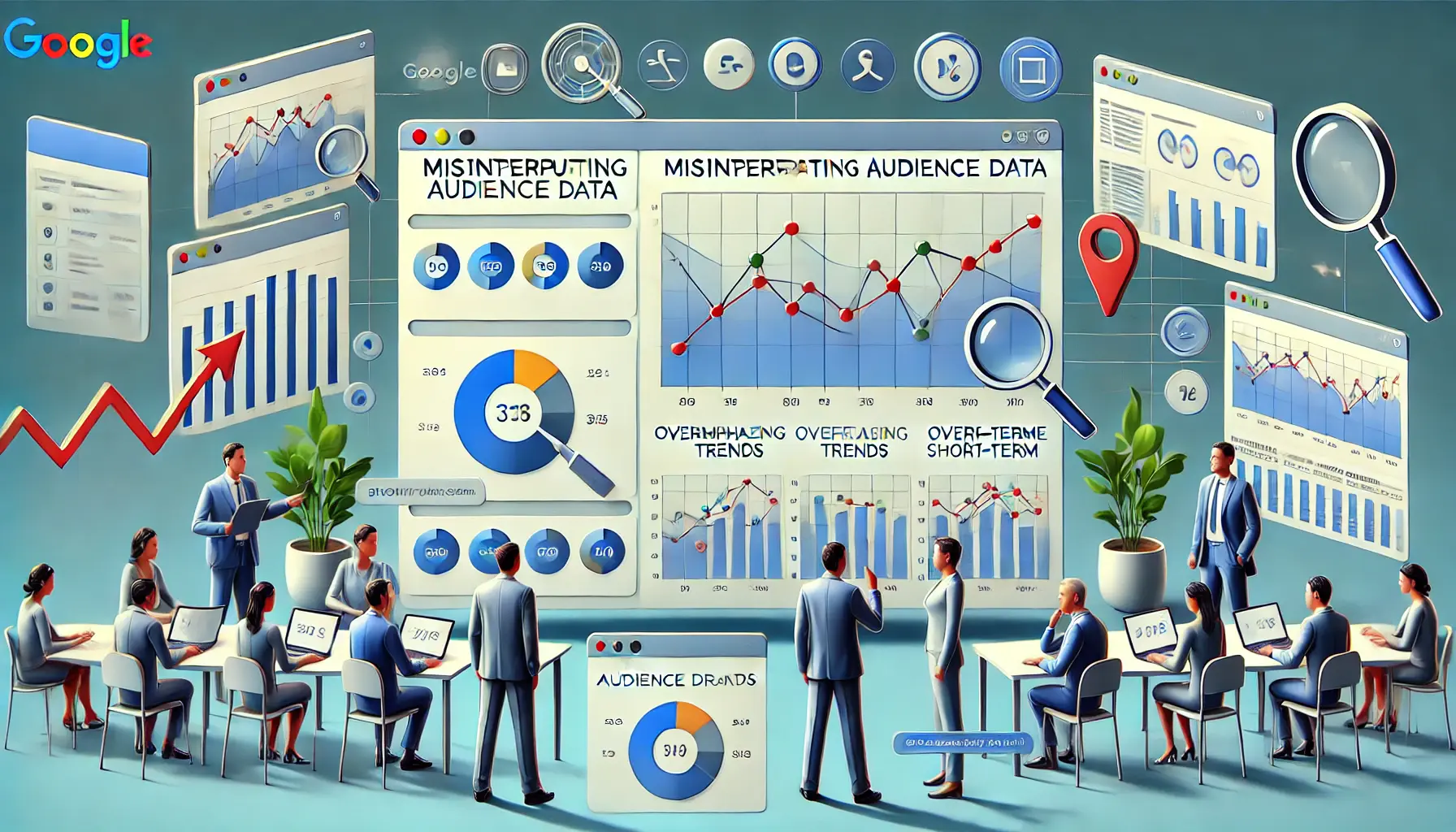
Representation of misinterpreting audience data in Google Ads, showing the consequences of incorrect data analysis on campaign performance.
Misinterpreting Audience Data
Poor interpretation of audience data is another common mistake.
Advertisers may make decisions based on a small sample size or rush to conclusions without analyzing long-term performance trends.
This can lead to unwarranted changes that negatively impact your campaign’s efficiency.
How to avoid: Take time to carefully analyze audience data over an extended period.
Look for consistent patterns rather than making decisions based on short-term fluctuations.
Google Ads’ reporting tools can help you gain deeper insights into audience behavior, allowing you to refine your targeting more precisely.
By avoiding these common mistakes, you can ensure that your Google Ads campaigns perform better, drive higher engagement, and deliver a stronger return on investment.
Regularly reevaluating and refining your targeting strategies is key to staying competitive in the dynamic world of digital advertising.
Avoid common targeting mistakes like over-targeting or under-targeting by regularly reviewing and refining your audience parameters.
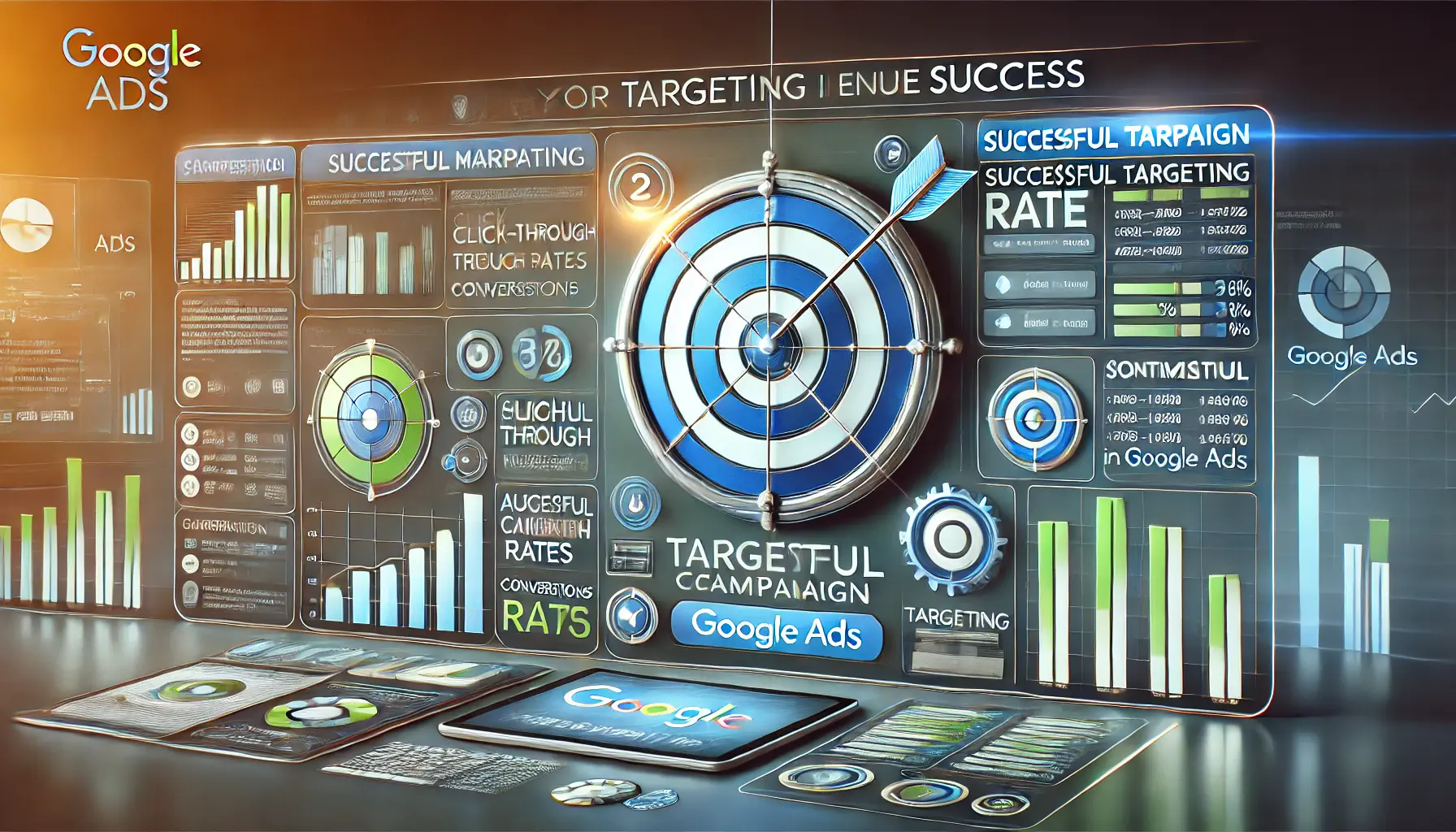
Illustration of targeting a campaign to ensure success in Google Ads, highlighting the importance of precision and audience engagement for effective results.
Targeting a Campaign to Ensure Success in Google Ads
Refining campaign targeting is a crucial element in maximizing the output of your Google Ads campaigns.
Whether you have a high-end budget or are working with every penny, refining your audience targeting allows you to optimize ad spend and ensure meaningful engagement.
Throughout this article, we have explored various strategies, advanced techniques, and common mistakes to avoid, all of which play an important role in building successful campaigns.

Illustration of continuous optimization in Google Ads, showing the process of ongoing improvements and real-time updates for better campaign performance.
The Importance of Continuous Optimization
Google Ads is a dynamic platform that requires continuous adjustments and optimization to stay competitive.
Regularly reviewing and updating your targeting settings ensures that your campaigns remain aligned with your business goals and the changing behavior of your audience.
From demographic targeting to leveraging machine learning, it’s clear that being proactive in optimization is key to long-term success.
Here’s a quick rundown of the key takeaways:
- Effective Targeting: Balance broad and specific audience parameters to strike the right balance between reach and precision.
- A/B Testing: Continuously test your targeting strategy, ad copy, and formats to find what resonates best with your target audience.
- Remarketing: Re-engage users who have already shown interest in your brand to boost conversions.
- Data-Driven Decisions: Use Google Ads tools to analyze audience data and make informed decisions to refine targeting.
- Advanced Techniques: Incorporate machine learning and audience signals to enhance campaign performance and target high-intent users more effectively.
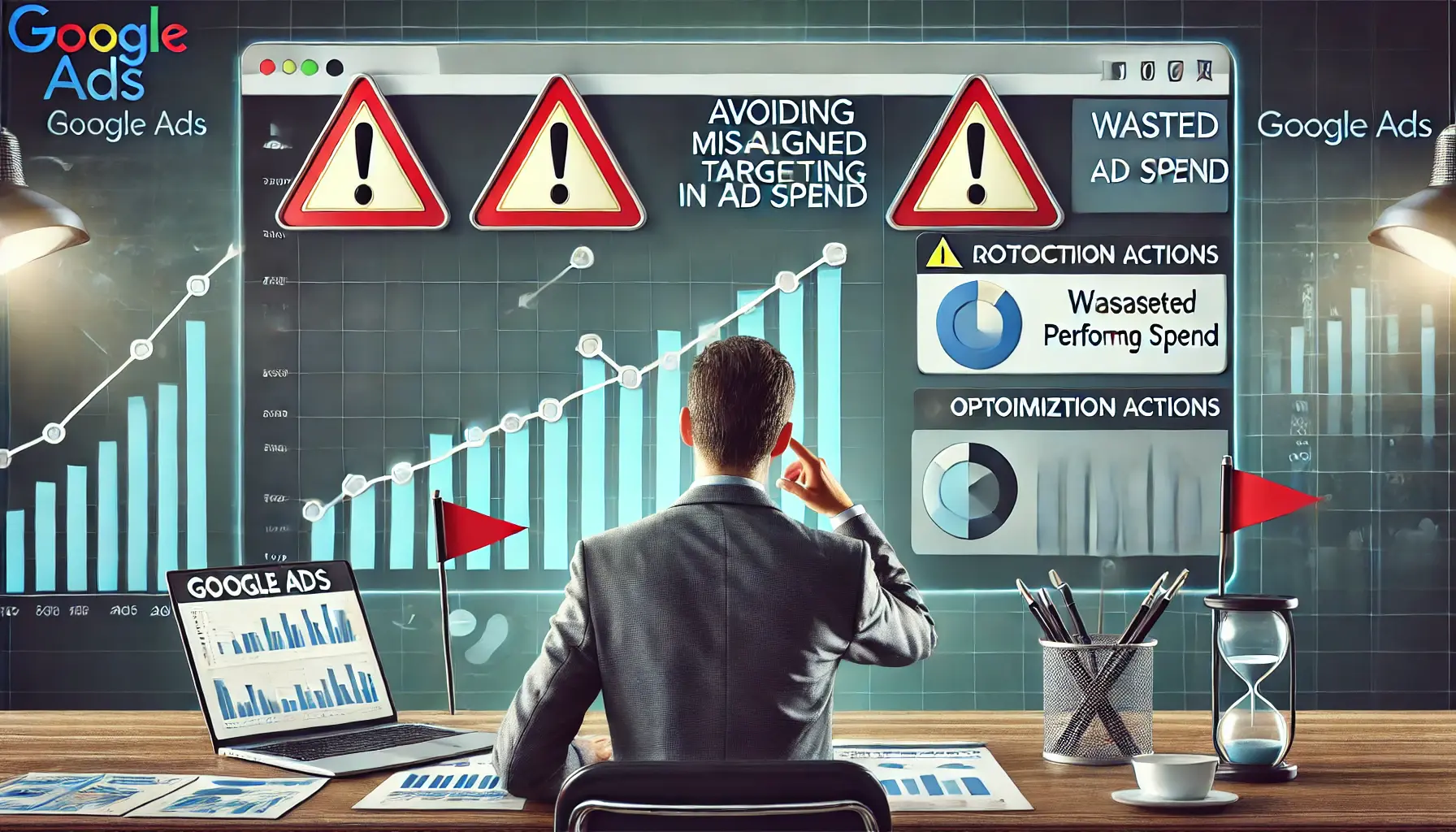
Illustration of avoiding common mistakes in Google Ads, showing corrective actions to improve campaign performance and reduce wasted ad spend.
Avoiding Common Mistakes
Even experienced advertisers can fall into common traps, such as over-targeting, neglecting negative audience exclusions, or failing to refresh targeting settings.
These mistakes can hinder the performance of your campaigns.
Regularly updating targeting settings and interpreting performance data correctly will help you stay ahead in the competitive world of digital advertising.
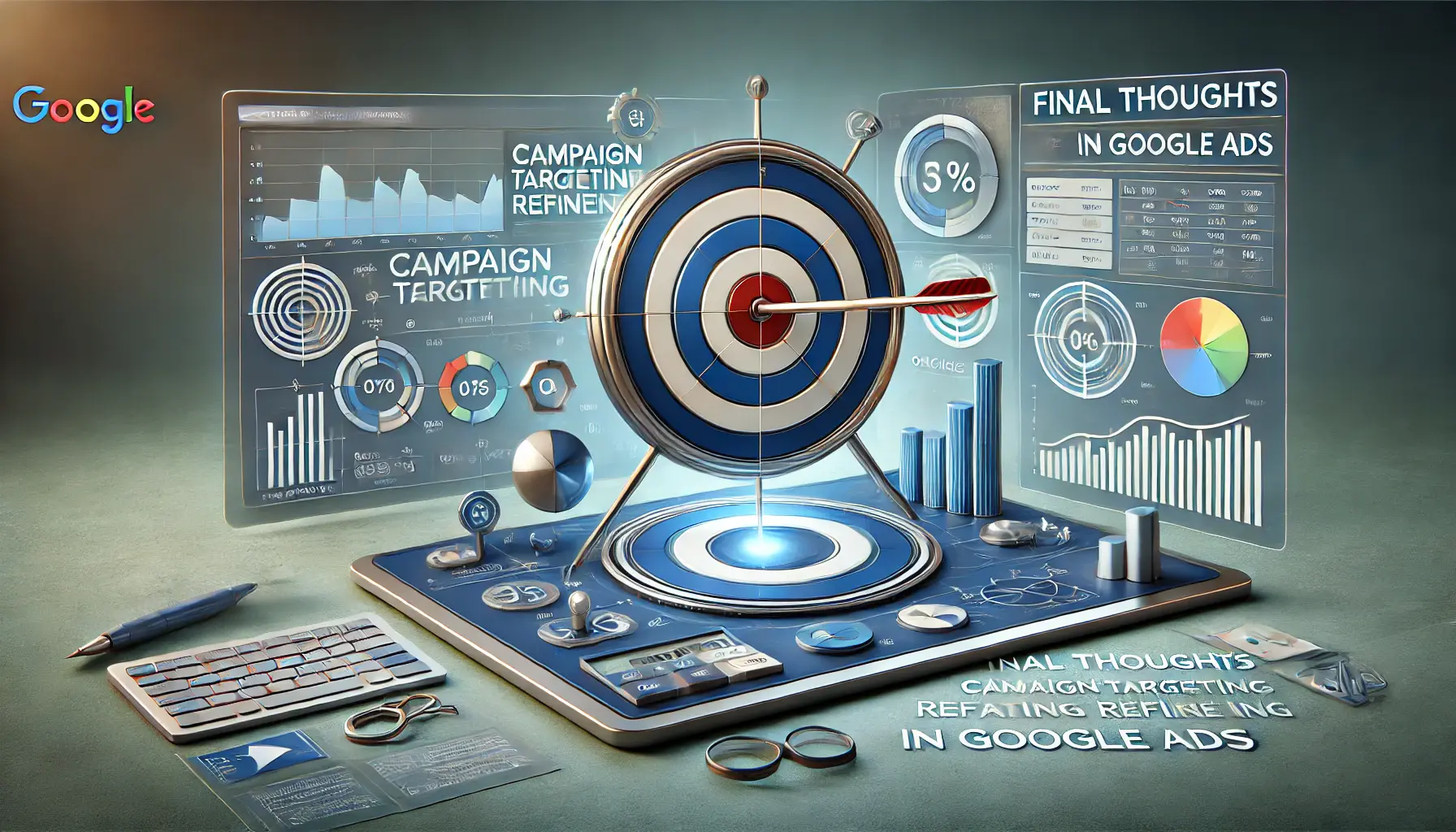
Illustration of final thoughts on campaign targeting refinement, emphasizing successful targeting strategies for improved performance metrics in Google Ads.
Final Thoughts on Campaign Targeting Refinement
In the competitive digital landscape, the fine line between an effective campaign and wasted resources often comes down to how well you target your audience.
Campaign targeting refinement is an ongoing process of analysis, testing, and adjustment.
By following best practices and utilizing advanced targeting techniques, you can ensure your ads are served to the right audience at the right time, increasing engagement and conversions for a better return on investment (ROI).
Ultimately, the foundation of any successful Google Ads campaign lies in thoughtful, data-driven targeting.
By implementing the strategies identified in this article and avoiding common mistakes, you are well on your way to achieving long-term success in your advertising efforts.
Consistent and thoughtful targeting refinement is key to optimizing your campaign for success and improving engagement and conversions.
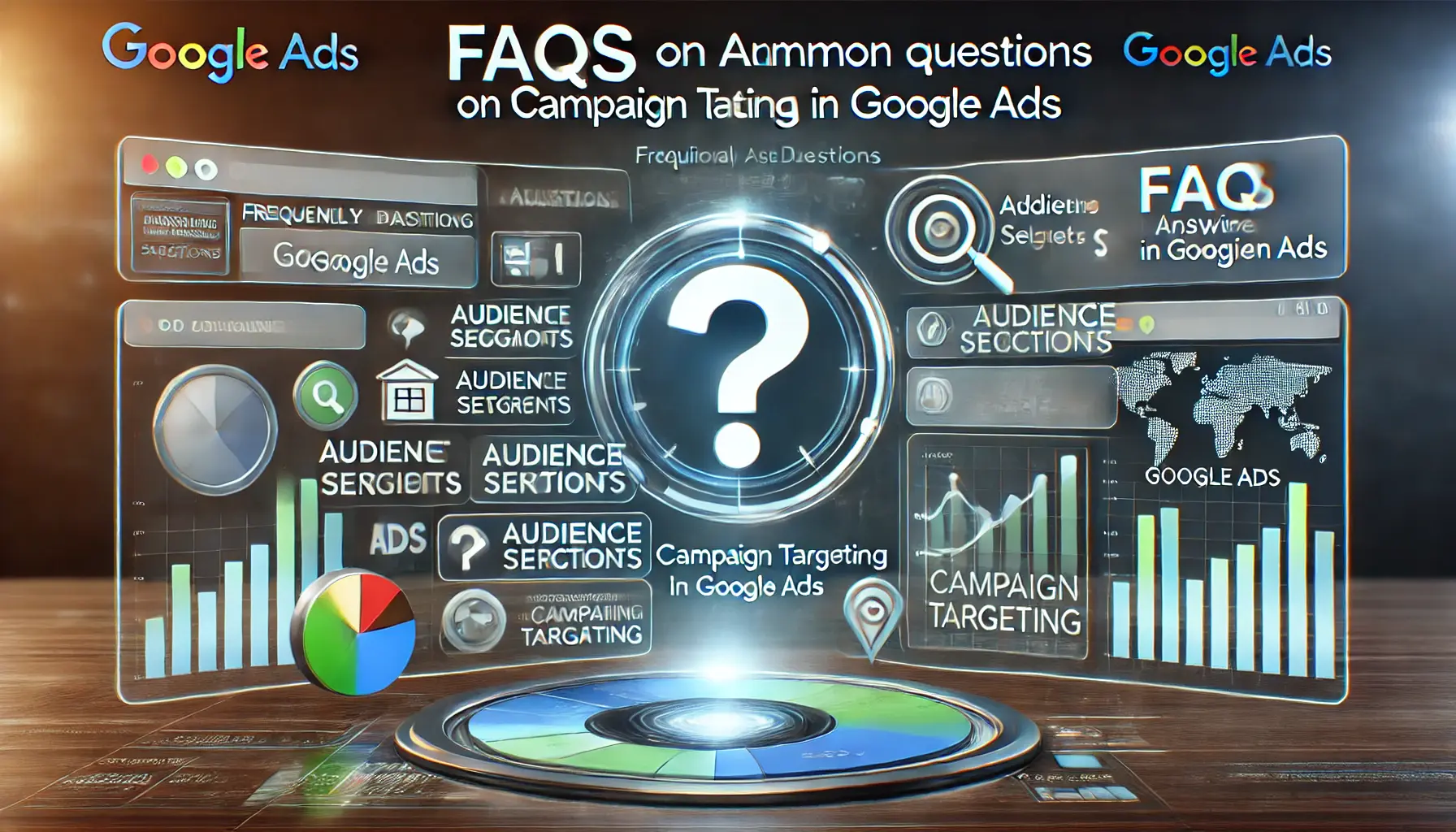
Illustration of FAQs on campaign targeting in Google Ads, offering clarity on common questions related to targeting strategies and audience segments.
Your campaigns can be managed by an agency specialized in Google Ads, check out our service page.
FAQs on Campaign Targeting in Google Ads
Here are some of the most frequently asked questions about campaign targeting refinement in Google Ads to help clear up common misconceptions and provide insights on how to best optimize your campaigns.
Targeting a campaign in Google Ads means defining and refining the audience based on specific parameters, including location, demographics, interests, and behaviors.
This ensures your ads reach the most relevant users.
Refining campaign targeting ensures that your ads show to users most likely to convert.
By narrowing your audience, you can reduce wasted ad spend, improve engagement, and increase your return on investment (ROI).
Key factors include demographic characteristics (age, gender, location), user behaviors, interests, and audience segments.
Additionally, incorporating machine learning and audience signals can improve targeting precision and campaign performance.
A/B testing allows experimentation with different audience parameters, ad copy, and formats to determine what works best.
It helps optimize your campaign over time by identifying the elements that perform well with your audience.
Remarketing re-engages users who have already interacted with your brand, delivering highly relevant ads and improving conversion rates while lowering cost per acquisition (CPA).
Common mistakes include over-targeting, under-targeting, ignoring negative audience exclusions, and neglecting to update targeting settings.
These errors can lead to wasted ad spend and reduced campaign effectiveness.
Machine learning uses data-driven insights to predict user behavior and optimize targeting in real-time.
It automates bid adjustments and helps deliver ads to users most likely to convert, improving overall campaign performance.
Regular updates are crucial to account for changes in audience behavior, campaign performance, and business goals.
Continuous optimization ensures that your ads remain relevant and effective over time.
Quality Score is a Google Ads metric that reflects how well your ad meets the user’s needs.
A higher Quality Score results in better ad placement, lower cost per click, and improved overall campaign performance.









